How to Optimize Your Healing Process with Wound Healer Techniques
In today's fast-paced world, the importance of effective healing methods cannot be overstated, especially when it comes to wound care. To truly optimize your healing process, it is essential to explore the innovative techniques offered by the Wound Healer concept. By incorporating these specialized strategies, individuals can not only enhance their recovery but also significantly reduce the risk of complications related to improper wound management. This article will delve into a variety of Wound Healer techniques designed to promote quicker healing, improve overall wound care, and empower patients to take an active role in their recovery journey. Whether you are a healthcare professional seeking to refine your approach or an individual wanting to understand how to facilitate your own healing, the insights within will provide valuable guidance on achieving optimal results.
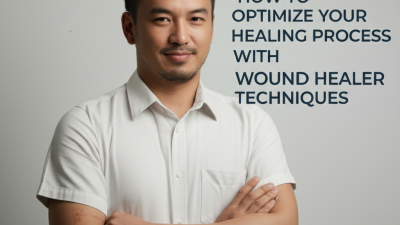
Understanding the Science of Wound Healing: Key Phases and Factors
Wound healing is a complex biological process that occurs in several overlapping phases: hemostasis, inflammation, proliferation, and remodeling. According to the World Health Organization, approximately 300 million surgical procedures occur annually, making an understanding of these phases crucial for optimal recovery. The hemostatic phase immediately follows injury, where blood vessels constrict and platelets aggregate to form a clot. This initial response lays the groundwork for subsequent inflammation, where immune cells clear pathogens and debris, setting the stage for tissue regeneration.
The proliferation phase, which typically lasts from day 3 to week 3 post-injury, is characterized by significant cellular activity. A report from the National Institutes of Health highlights that the granulation tissue formed during this phase is critical for restoring skin integrity, as fibroblasts synthesize collagen to provide structural support. Factors such as oxygen, hydration, and nutrition play pivotal roles in this phase, influencing the overall speed and quality of healing. Effective management strategies, like optimizing moisture levels and ensuring adequate nutrient intake, are essential in harnessing these healing mechanisms for quicker recovery.
How to Optimize Your Healing Process with Wound Healer Techniques
| Phase of Wound Healing | Duration | Key Factors | Optimization Techniques |
|---|---|---|---|
| Hemostasis | Minutes to Hours | Platelet Aggregation, Clot Formation | Immediate care, Sterile technique |
| Inflammation | 3-6 Days | Swelling, Redness, Pain | Antibiotics, Moisture retention |
| Proliferation | 4-21 Days | Cell Migration, Tissue Formation | Hydration, Nutritional support |
| Maturation | 21 Days to 1 Year | Collagen Remodeling, Scar Formation | Physical therapy, Scar management |
Essential Wound Care Techniques: Maximizing Healing with Proper Hygiene
Maintaining proper hygiene is vital in wound care to optimize the healing process. Effective wound healing techniques begin with cleaning the injured area thoroughly to prevent infection. Utilizing saline solution or gentle antiseptics can facilitate this process. Following the initial cleaning, applying appropriate dressings helps keep the wound moist, which is essential for cell regeneration. Changing the dressings regularly according to the guidance of a healthcare professional can significantly enhance healing outcomes.
In addition to cleaning and dressing, it’s important to monitor the wound for any signs of infection, such as increased redness, swelling, or discharge. Early detection of potential complications allows for prompt intervention, which is crucial in ensuring the wound heals properly. Therefore, understanding and applying essential wound care techniques not only aids in maximizing healing but also reduces the risk of long-term damage or chronic issues associated with improperly cared-for wounds.
The Role of Nutrition in Wound Healing: Foods and Supplements That Promote Recovery
Nutrition plays a crucial role in the wound healing process, as it provides the essential nutrients our bodies need to rebuild tissue and promote recovery. A well-balanced diet rich in specific vitamins and minerals can significantly enhance healing rates. Foods high in protein, such as lean meats, fish, eggs, and legumes, are vital for tissue regeneration and the formation of new cells. Additionally, vitamins A and C, found in fruits and vegetables like carrots, spinach, and citrus, help to support skin repair and immune function.
**Tips for Optimizing Nutrition in Wound Healing:**
1. Incorporate a variety of colorful fruits and vegetables into your meals to ensure a wide range of nutrients.
2. Consider adding supplements like zinc and omega-3 fatty acids, which have been shown to aid in the healing process and reduce inflammation.
3. Stay hydrated by drinking plenty of water, as proper hydration is essential for optimal physiological function and can speed up recovery.
By focusing on nutrition and including these healing foods and supplements in your diet, you can create an environment that supports faster, more effective healing.
Innovative Wound Healing Technologies: Advances in Treatment Methods and Products
The wound care market is poised for significant growth, with projections indicating that it will reach $33.28 billion by 2031 at a compound annual growth rate (CAGR) of 4.99% from 2024 to 2031. This growth is driven by the increasing demand for advanced treatment methods and products that cater to various wound types and healing stages. As our understanding of wound healing continues to evolve, innovative technologies such as microneedle patches are gaining traction. These patches represent a promising frontier in wound and scar treatment, offering targeted delivery of therapeutic agents while minimizing pain and improving patient outcomes.
Research into these microneedle-based therapies highlights the complexity of the wound healing process. Each phase of healing requires specific interventions, and the diversity of treatment options available reflects the need for tailored approaches. As techniques and products advance, they provide clinicians with more effective tools to address the varied needs of patients, ultimately contributing to an optimized healing process. The convergence of technology and therapeutic innovation is set to revolutionize the wound care landscape, enhancing the quality of care delivered to individuals facing wound healing challenges.
Measuring Healing Outcomes: Metrics and Strategies for Tracking Progress Effectively
Measuring healing outcomes is essential for optimizing the wound healing process. Various metrics can be utilized to track progress effectively, including wound size reduction, healing time, and the presence of infection. According to a study published in the Journal of Wound Care, accurately assessing these metrics can improve patient outcomes by 30% when interventions are adjusted based on data. Using standardized assessment tools, such as the Bates-Jensen Wound Assessment Tool, allows clinicians to objectively evaluate healing progress, fostering an evidence-based approach to patient care.
Moreover, integrating technology into wound management can enhance outcome measurement significantly. For instance, the use of digital imaging systems can provide precise measurements of wound dimensions over time, allowing for real-time tracking of healing rates. A report from the Wound Healing Society indicates that facilities utilizing advanced monitoring techniques have seen a 25% decrease in chronic wound development. By implementing these strategies, healthcare providers can not only optimize healing processes but also improve the overall quality of care for their patients.
Wound Healing Progress Over 12 Weeks
Related Posts
-
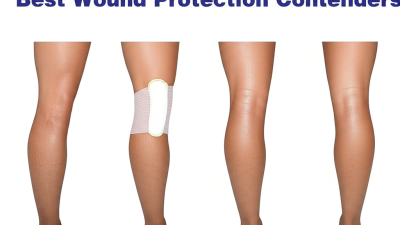
Top Contenders for Best Wound Protection Comparing Features and Benefits
-

Global Buyers Discover New Wound Care Supply Innovations at Guangzhou Trade Fair 2025
-
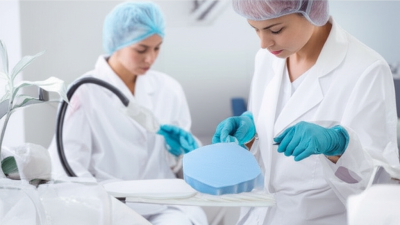
Chinese Excellence in Wound Care Dressings: The Global Export Leader You Can Trust
-
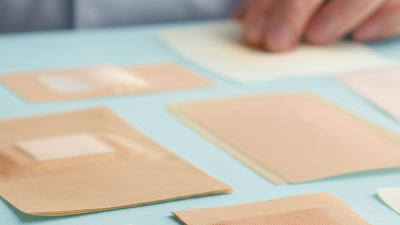
How to Choose the Right Wound Dressing for Effective Healing Solutions
-

Ultimate Checklist for Choosing the Best Wound Cleanser for Your Medical Supply Needs
-
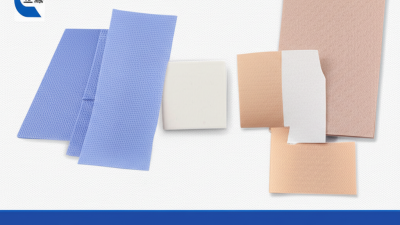
Top 10 Wound Care Supply Manufacturers from China at the 137th Canton Fair
